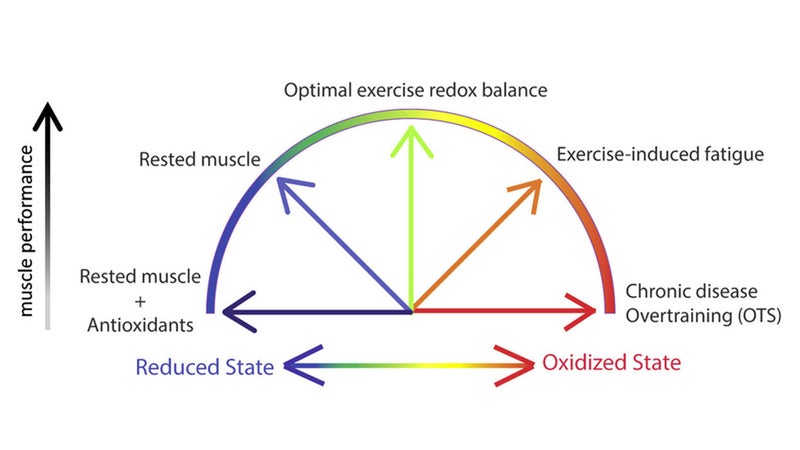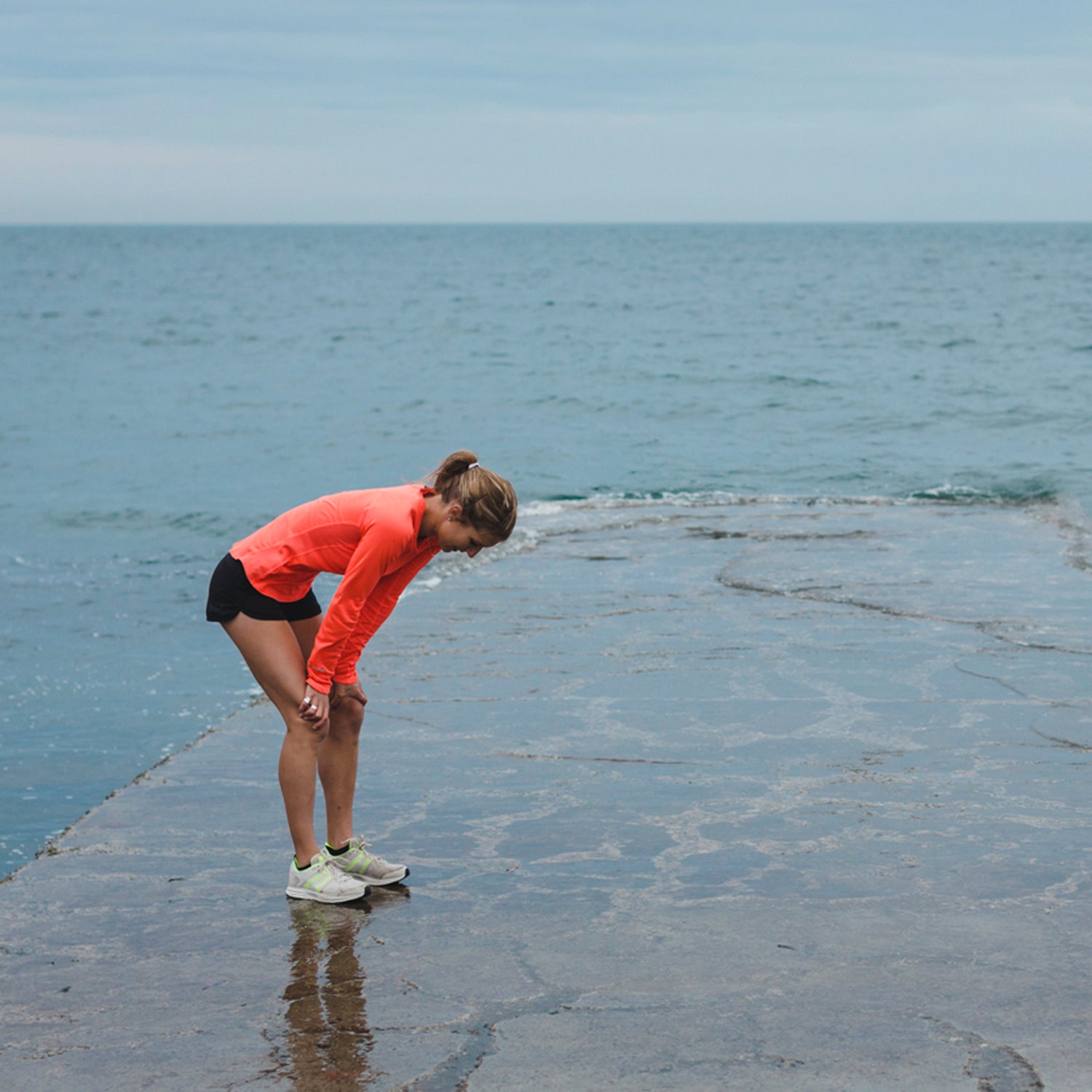There’s no shortage of theories about overtraining syndrome, a state of pervasive fatigue and poor performance that lasts months or years and sometimes ends athletic careers. In fact, there are too many theories. It’s psychological, it’s neurological, it’s adrenal, it’s hormonal, it’s immunological, it’s cardiovascular—it seems to affect pretty much every system in the body, which makes it hard to pinpoint the cause.
from a group led by Johanna Lanner of the Karolinska Institute in Sweden presents the case for a seemingly obvious culprit: the muscles themselves. Writing in the journal Redox Biology, they explore four main theories for what might go wrong within your muscles after a prolonged period of heavy training that could lead to long-term changes like those seen in overtraining syndrome. If they’re right, it suggests some possible countermeasures against overtraining—but that’s a big if.
From the muscle’s perspective, training is a constant cycle of stress and recovery. A hard workout causes all sorts of metabolic and structural disruptions in your muscle fibers, which in turn trigger adaptations that occur during the recovery period and make you stronger and fitter. These perturbations are good when they’re temporary, but if they become chronic—for example because you’re not recovering enough between workouts—then they make you weaker and more fatigued.
It’s not just your maximum strength that’s affected; even relatively light submaximal exercise like a jog feels harder. This effect can last for days or even weeks after a single killer workout, an effect known as “prolonged low-frequency force depression,” or PLFFD. Intriguingly, studies with single muscle fibers from rodents also exhibit PLFFD. These muscle fibers obviously aren’t depressed or hormonally imbalanced—there must be some sort of prolonged disruption within the muscle fiber itself. Since overtraining in some ways looks like a chronic version of PLFFD that won’t switch off, Lanner and her colleagues suggest that overtraining, too, may involve problems in the muscle.
Here are the four leading muscle-related explanations of overtraining they consider:
Glycogen Depletion
This one is pretty straightforward: maybe chronic depletion of glycogen, the form in which muscle fibers store carbohydrate, interferes with the ability of those fibers to generate force and ultimately leads to what we experience as overtraining. It almost seems too simple, but it’s actually quite plausible that athletes who are training at truly extreme levels—i.e. those most vulnerable to overtraining syndrome—have trouble keeping up with their bodies’ fuel needs. That’s what a study on ketone drinks suggested last year: the apparent ability of these drinks to ward off overtraining was linked to increased calorie intake.
Lanner and her colleagues aren’t convinced, though. They point out that failed to prevent overtraining despite aggressive carbohydrate supplementation. Not getting enough carbohydrate may contribute to overtraining, but getting enough, on its own, doesn’t seem to prevent it.
Muscle Damage
This is the classic explanation for next-day soreness: a hard workout, especially something like downhill running or box jumps that involves a lot of eccentric contractions, causes little microtears and other physical damage to your muscle fibers. Normally this damage gets repaired and ultimately leaves you stronger—unless the balance between damage and repair is chronically tilted too far toward the former.
Not so fast, though. While the link between damaged muscle fibers and weaker muscles seems intuitively obvious, studies don’t seem to find a good correlation between the amount of visible damage and the decline in function, according to Lanner and her colleagues. The damage is there, but it doesn’t seem to directly cause the problems.
Inflammation and Cytokines
This may sound a little familiar from all the recent discussion of in COVID-19. A similar idea applies here: a limited amount of inflammation (which is induced by small proteins called cytokines) is a normal part of both immune responses and post-exercise muscle repair, but too much can inflict further damage. After repeated strenuous exercise with insufficient recovery, you can end up with chronically elevated cytokine levels and inflammation, which in turn interferes with muscle function.
Furthermore, this inflammatory response could start a vicious cycle: cytokines also lead to an increase in oxidative stress, which in turn triggers the release of more inflammation-promoting cytokines, which increases oxidative stress, and so on—which brings us to the heart of Lanner’s argument.
Oxidative Stress
There’s a reason this paper was published in Redox Biology, which is a rather specialized journal. Even though the authors present four theories, their main interest is in the idea that oxidative stress—the excessive presence of damaging molecules called reactive oxygen species—is a key driver of decreased muscle function in overtraining syndrome.
It’s true, according to at least ��, that overtrained athletes display elevated levels of oxidative stress. You might think that there’s a simple solution to this: take antioxidant supplements, which neutralize reactive oxygen species. But it turns out that the role of oxidative stress in the body is fiendishly complicated. Like inflammation, oxidative stress also serves as a key signal telling your body to adapt and get fitter after exercise, so eliminating it can have negative effects. While the topic is still being debated among researchers, there’s considerable evidence that regular use of antioxidant supplements can blunt the gains you’d normally get from a training program.
Typically, rested muscle stays in a slightly “reduced” state. That’s the opposite of being oxidized, meaning it has gained rather than lost electrons. When you start exercising, that generates oxidative stress, which actually puts your muscle into an optimal balance between reduction and oxidation, maximizing the amount of force you can generate. But if you exercise too hard or too long, the amount of oxidation becomes too much and muscle performance decreases again.
Lanner and her colleagues provide a schematic diagram to illustrate this delicate balance between reduced and oxidized muscles:

Normally, you’re sitting slightly to the left on this diagram, at “Rested muscle.” If you start exercising, you move to the middle, at “Optimal exercise redox balance.” If you push too hard, you keep moving to the right, to “Exercise-induced fatigue.” Allow yourself to recover, then everything will be fine—but if you keep pushing, you’ll end up on the far right, at “Chronic disease and Overtraining.”
If you start popping a daily dose of vitamin C or other antioxidants, you move left on the curve. Under normal circumstances, you end up on the far left, at “Rested muscle + Antioxidants.” That’s not ideal, because then you can’t get to that optimal balance in the middle during workouts, which is why routine use of antioxidants isn’t a good idea for athletes. But if you’re on the border of overtraining, the risks and benefits may be different.
Lanner and her colleagues acknowledge the risks associated with supplementation, but suggest that if an athlete on the edge of overtraining syndrome is in a state of chronically elevated oxidative stress—the kind of thing you see in rheumatoid arthritis and Duchenne muscle dystrophy—then antioxidants may help. The same thing may apply to anti-inflammatory drugs: a bad idea under normal circumstances, but possibly helpful in the face of chronic inflammation.
Key caveat? Of the 122 references cited in the article, a majority seem to involve rats. That’s an important and useful way to figure out how muscle fibers work, but any real advice about how athletes should train needs to be based on studies of athletes training. Still, I think the focus on what’s happening in the muscles is an interesting and perhaps underappreciated aspect of overtraining. And the idea that antioxidants are a bad idea on a routine basis but useful in times of unusually high stress—a training camp, a trip to altitude—has been floating around among elite athletes for a while.
For now, though, I think the most important weapon to keep in mind is the one Lanner and her colleagues mention at the start of their section on prevention and treatment: “carefully planned training programs that include regular monitoring by coaches and the athletes themselves to assess adaptation to training over both the short and long term.” Put more simply: if you’re really, really tired and seem to be getting slower, take a break rather than a pill.
For more Sweat Science, join me on and , sign up for the , and check out my book .


